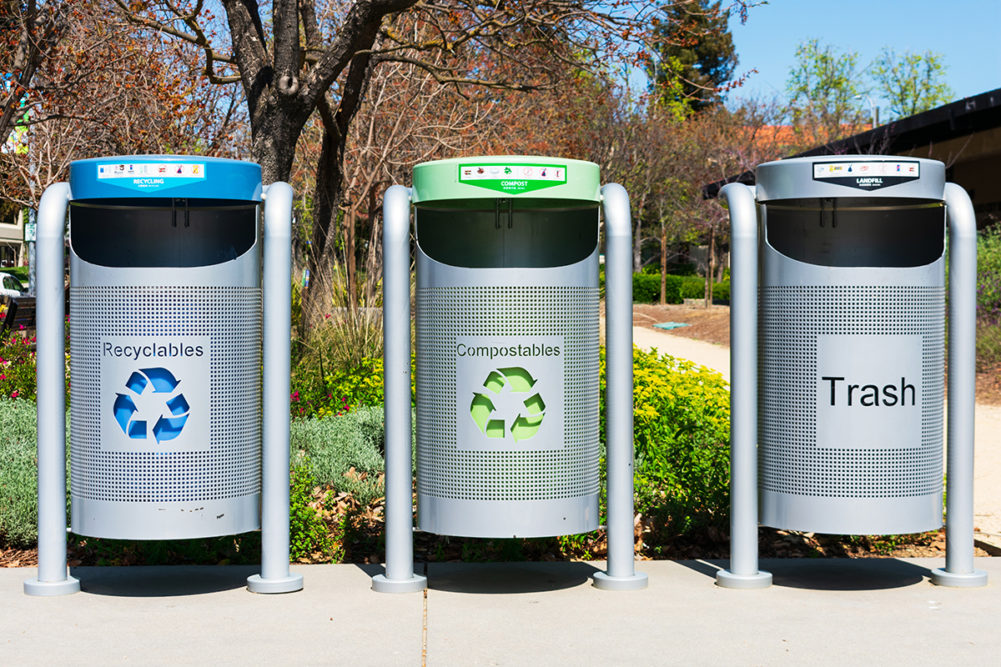ARLINGTON, VA. — Dispelling consumer confusion around plastics recycling, investing in local programs and embracing molecular technologies are some of the current steps the Consumer Brands Association and its members are taking to create a sustainably packaged future.
After identifying that 71% of Americans report being confused by the nearly 10,000 local recycling programs within the United States, each with their own set of guidelines on what can be recycled and how, the association has begun collaborating with the Recycling Partnership to provide localized, up-to-date recycling instructions directly to consumers’ phones. The technology combines the CBA’s SmartLabel program, a digital platform that uses QR codes on product packaging to display ingredients, nutritional information and other product details, with the Partnerships’ database of package-specific recycling information, Recycle Check.
“Consumers want recycling instructions, consumers want to recycle, and they want recycling to be easy,” John Hewitt, vice president of packaging sustainability at the CBA, said in an interview with Food Business News.
Mr. Hewitt explained how the platform is especially suited to bridge the gap between consumers’ desire to recycle and their lack of knowledge on how to sort items that are not widely recyclable.
“For those things like water bottles, laundry detergent jugs, the PET, the HDPE, we all know what to do with them,” he said. “But what do you do with a flexible film? What do you do with a polypropylene cup?
“That's where SmartLabel and Recycle Check specifically can benefit you. You have your phone … you pick it up, you point it right at the SmartLabel QR code, and boom, it tells you what the local rules are and what to do with that individual product.”
In addition to its consumer-focused efforts, the association and its CPG members continue to tackle sustainability from the manufacturing side with investments in local recycling initiatives, such as Extended Producer Responsibility (EPR) programs. ERP policies place some financial and/or operational responsibilities for the end-of-life of products onto producers, often taking the shape of funding costs for collection, sorting and processing, along with improvements to recycling infrastructure. The programs have been enacted through legislation in 4 states (Maine, Oregon, Colorado and California), and 11 others have proposed EPR bills.
“We’re very excited about those states that have EPR programs, and we’re really looking forward to seeing what can be accomplished with the direct investment that our members are making,” Mr. Hewitt said.
Many of the CBA’s members also have made individual commitments to increase their recyclable packaging and recycled packaging content, with 80% of the top 25 CPG companies in the United States committing to using fully recyclable packaging for all their products by 2030. Within the food and beverage industry, examples include the Kraft Heinz Co.’s recently announced goal to reduce 20% of virgin plastic across its entire portfolio by 2030 and PepsiCo, Inc.’s benchmark to eliminate 50% of single-use virgin plastic per serving in the same timeframe.
Similarly, a large number of food and beverage manufacturers have signed on to the Ellen MacArthur Foundation’s New Plastics Economy Global Commitment, which aims to create a circular economy for plastic. The more than 500 signatories have pledged to reduce their virgin plastic use and introduce 100% reusable, recyclable or compostable packaging by 2025, but many participants are on track to fall short of that target.
Part of the difficulty in achieving these goals comes from inadequate collection and sorting infrastructure, which results in a limited supply of recycled inputs. In fact, the current supply of recycled content only satisfies roughly 6% of the demand from manufacturers, said Mr. Hewitt.
“The future is here, the demand is here, the CPG companies have all made commitments,” he said. “But part of that is being able to have the necessary recycled content to help meet those goals as well.”
The CBA also has been a strong advocate for using molecular recycling as one method to reduce the bottleneck for recycled inputs. The process, which breaks down plastic polymers into monomers that can be remanufactured, could complement existing mechanical recycling technology and handle materials that would previously be unrecyclable.
“The hardest part is trying to figure out how do you actually close that loop of circularity in the plastics world, and molecular recycling will be one of the tools that helps us achieve that,” Mr. Hewitt said. “It allows you to actually have a truly circular economy in the plastic space.”
Plastic contamination, largely the result of improper sorting, also has increased the difficulty of developing recycled inputs in a cost-effective manner. The association hopes its SmartLabel platform can serve as a consumer-facing solution to the issue.
“If we make it easier for the consumer to recycle, then we reduce contamination,” Mr. Hewitt said. “If we reduce contamination, it gets less expensive, and the feedstock is more readily available.
“The SmartLabel program is a great way to accomplish that. We don’t need to worry about changing the rules and 10,000 different recycling programs across the country, we empower the consumer to be able to help solve that problem for themselves and take control of their own recycling journey.”
